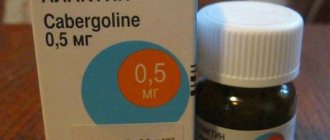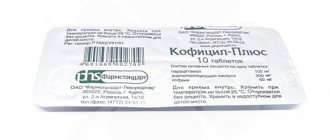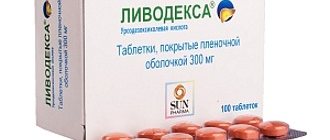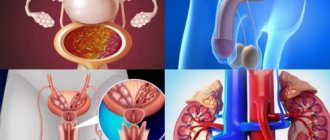Blood pressure is an important indicator of health. In addition, it is easy to measure and control. This is why doctors and patients pay so much attention to blood pressure levels.
The initial blood pressure level in patients with liver diseases is not always normal. Therefore, when blood pressure increases while taking the drug Phosphogliv, the first thing the attending physician should do is to find out whether there is a connection between these two facts, or whether it is just a coincidence.
If the patient takes the drug in capsules and uses small dosages, it is unlikely that the increase in blood pressure is associated with taking Phosphogliv. If the pressure has increased in a previously healthy person who was treated with intravenous injections of Phosphogliv in high doses, then it may be worth reporting this side effect to the manufacturer, since each such case should be taken into account in Pharmacovigilance statistics.
The composition of the drug Phosphogliv includes glycyrrhizic acid, a substance that has an anti-inflammatory effect. Many medications designed to reduce inflammation have side effects such as increased blood pressure. Glycyrrhizic acid is no exception. In comparative studies, it was found that in 1.7% of cases, intravenous administration of the drug Phosphogliv can lead to a short-term (transient) increase in pressure.
Meanwhile, 1.7% is an extremely low frequency for adverse events, so even hypertensive patients should not refuse treatment with Phosphogliv just because of fear of its possible effect on blood pressure.
Compound
This drug belongs to the category of hepatoprotectors. This is a group of drugs whose purpose is the prevention and treatment of liver diseases:
- steatohepatosis;
- cirrhosis;
- alcoholic injuries;
- hepatitis A.
Another task of hepatoprotectors is to minimize the side effects of other medications and their negative effects on the liver.
Important! The use of Phosphogliv is also justified in cases of skin diseases, the manifestations of which depend on the quality of the liver.
Liver There
are two active ingredients in the product. One capsule contains:
- 35 mg sodium glycyrrhizinate. Its purpose is to counteract inflammation, suppress the activity of bacteria and viruses that damage the liver. Thanks to the effect of this substance, the liver begins to work more efficiently, and the causes that lead to the death of hepatocytes are neutralized.
- 65 mg of phospholipids, among which phosphatidylcholine predominates. This element restores the structure of the organ and its functions.
The use of Phosphogliv in the treatment of liver pathologies helps restore previously damaged cell membranes and make liver cells healthy again.
In addition to the above components, the described medicine contains auxiliary components: cellulose, calcium carbonate, calcium stearate, silicon dioxide and talc.
Attention! The drug has a diverse effect on the patient's body. On the one hand, it helps protect the organ from damage. On the other hand, the drug increases the rate of restoration of cell membranes.
Who can the medicine help?
I was surprised, but my problem turned out to be very “popular”. According to the doctor, every third patient who complains of pain and heaviness in the side eventually receives a diagnosis related to liver pathologies. According to statistics, more than 40% of the adult population of our country suffers from diseases of the body’s “filter”.
Due to the prevalence of the problem, many medications have been developed aimed at supporting and treating the liver. A specialist recommended Phosphogliv to me because of its high effectiveness and versatility (there are almost no contraindications).
Judging by the reviews of my “colleagues in misfortune,” the capsules help with:
- viral hepatitis;
- poisoning (toxic effects, long-term pharmacotherapy);
- cirrhotic degenerative changes in tissues.
Separately, it is worth noting the fact that the drug can improve the condition of a person suffering from alcohol addiction. The instructions for use mention the possibility of treating this type of intoxication.
Pharmacodynamics and pharmacokinetics
The drug belongs to the group of combined drugs because it simultaneously has the following types of effects on the body:
- membrane stabilizing;
- hepatoprotective;
- antiviral.
Restoration of the structure of hepatocytes is achieved due to the active substance phosphatidylcholine. It has a cytoprotective effect. After taking the drug, thanks to this element, protein and lipid metabolism is normalized, the loss of enzymes by hepatocytes is prevented, and the risk of developing fibrotic changes, cirrhosis and other disorders that occur at the cellular level is reduced.
The anti-inflammatory effect of taking Phosphogliv occurs as a result of the action of sodium glycyrrhizinate. It suppresses the process of viral replication in liver tissues and stimulates the synthesis of interferons. Has antioxidant and antiallergic effects.
The pharmacokinetics of the drug comes down to the interaction of two main components - phosphatidylcholine and the sodium salt of glycyrrhizic acid. More than 90 percent of all phospholipids taken orally with one capsule of the drug are absorbed in the rectum, where approximately half of the total amount is broken down. After entering the blood, the active substance penetrates the affected organ, in this case the liver.
Glycyrrhizic acid is also absorbed in the intestine, the residues are excreted in urine and bile. The moment of interaction between the two components is fundamental, since it is phospholipids that increase the intensity and rate of absorption of glycyrrhizins.
special instructions
When taking the drug, persons with arterial hypertension should be careful, since while taking Phosphogliv capsules, short-term, sudden increases in blood pressure are possible.
The drug Phosphogliv does not affect the functioning of the central nervous system and the speed of psychomotor reactions.
There is no experience with the use of the drug among children under 12 years of age and the safety of capsules for the child’s body has not been studied, therefore Phosphogliv is not recommended for use by persons under 12 years of age.
Indications for use
There are few indications for taking Phosphogliv:
- fatty hepatosis;
- cirrhosis;
- drug-induced damage to liver cells;
- alcohol impairment;
- other toxic lesions;
- viral hepatitis.
Liver cirrhosis
The use of the drug is also prescribed for pathologies such as fibrosis. This is the stage of damage in which scar tissue begins to replace normal tissue. This happens if there has been inflammation in the liver for a long period of time.
Dermatologists also recommend the use of this medicine. In some situations, the condition of the skin directly depends on the condition of the internal organs, including the liver. It is important to use the medicine for the following skin diseases:
- neurodermatitis;
- eczema;
- psoriasis.
With therapy using Phosphogliv, relapses occur much less frequently, and the severity of the manifestation is reduced.
Important! When treating any disease, it is worth following an integrated approach, combining Phosphogliv with other medications.
Reputation of the medicine for the liver
Before purchasing the product, I surfed the Internet a little in search of reviews from real people. Fortunately, Phosphogliv is sold in regular pharmacies, so the manufacturer does not try to praise its product everywhere on the Internet. Let me give an example of a statement from a capsule buyer:
“I bought the drug after a recommendation from a friend. I used to take Essentiale, but noticed that the effectiveness of the treatment was gradually decreasing. I chose the most “vigorous” option – Phosphogliv Forte. I was pleased with the effect. The heaviness in the side disappeared, fluid began to drain and bile began to flow. I hope that there will be no addiction..."
I decided to start with the usual dosage of the medicine and gradually increase the pressure if necessary. Looking ahead, I will write that the usual (not extreme) version of the drug was enough.
Contraindications
There are some contraindications for taking the described drug. Their list is as follows:
- Individual intolerance to individual components of the drug.
- Pregnancy, lactation.
- Children's age (use of the product is allowed from 13 years).
Contraindications
These contraindications are absolute, which means a complete ban on the use of the medicine of this name. There are also relative contraindications, in which Phosphogliv is prescribed with great caution. Hypertension is such a contraindication. What should I do if the recommended drug increases my blood pressure? You need to think about replacing it.
Attention! Patients suffering from portal or arterial hypertension should use Phosphogliv with great caution and constantly monitor their condition. Otherwise, the drug may increase blood pressure to critical levels.
Drug interactions
The drug Phosphogliv can be prescribed to patients simultaneously with antibiotics, antibacterial drugs, bacteriostatics, and antiviral drugs.
It is not recommended to take Phosphogliv capsules simultaneously with enterosorbents and antacids, as these drugs reduce the absorption of the active substances of the capsule and reduce its therapeutic effect.
Data on any other drug interactions are not provided, but if the patient is taking medications or dietary supplements, the doctor should be warned about this.
Side effects
Most patients treated with this medicine perceive it well. In some cases, doctors noted individual rejection of the components of the capsules, which was expressed in the form of the following symptoms:
- rash on the body;
- bloating;
- coughing;
- difficulty breathing (nasal);
- belching;
- skin itching;
- peripheral edema;
- discomfort in the gastrointestinal tract.
After the drug was stopped, the symptoms disappeared within several days, which confirms the fact that side effects occurred when taking this drug.
Storage conditions
The medicine should be stored at a temperature of 20 degrees in a place where small children and pets cannot reach. In addition, this place should not be wet and light.
If all conditions are met, Phosphogliv capsules can be stored for no more than 3 years. The lyophilisate can be stored for no more than 2 years.
Did you know that the most common diseases of the 21st century are liver problems? More details:
- How to recognize the first signs of hepatitis and effectively cope with the disease?
- An interesting article about liver cirrhosis, you will learn about the history of the disease and its prevalence in the world.
- Pain or discomfort in the right hypochondrium? Perhaps it's hepatosis! How can it be cured?
How to take and at what pressure, dosage
Traditionally, the drug is taken orally; chewing is not required. The capsule should be taken with a small amount of clean drinking water.
When treating an adult or child over 12 years of age, the drug is prescribed two capsules at a time. It is optimal to take the medicine with meals. The maximum possible course of treatment is no more than 180 days. The average duration of therapy is 3 months.
If an increase in blood pressure occurs during treatment with this drug, it must be discontinued, the pressure reduced and consult a doctor. The fact is that just under 2% of people are prone to high blood pressure after taking Phosphogliv.
In some situations, to continue the course of therapy, you can sufficiently adjust the dose of the drug, lower it, but only a specialist can do this. If a hypertensive patient has constantly elevated blood pressure, then the use of Phosphogliv, which can raise blood pressure, is contraindicated.
Phosphogliv increases blood pressure, what should I do?
What should someone who is among those 1.7% of people whose blood pressure increases with Phosphogliv do? First, you need to immediately tell your doctor if you experience a side effect from your treatment. The doctor should reduce the dose of the drug to the recommended one. If this is not enough to normalize blood pressure, the doctor will prescribe a drug from the diuretic group (spironolactone) to restore the imbalance of potassium and sodium salts.
Conclusions.
In 98.3% of patients, Phosphogliv does not increase blood pressure. The change in blood pressure in 1.7% of people taking Phosphogliv is transient and, as a rule, disappears without a trace after adjusting the dose of the drug.
Overdose
No information about drug overdose was received from the research group. There have been no cases of exceeding the dosage and the consequences of this. However, it is worth noting that in some cases, excessive doses can help reduce the amount of potassium in the patient's blood. This factor provokes sodium retention, and consequently, the appearance of edema. To avoid serious consequences, you should consult a doctor.
Overdose











